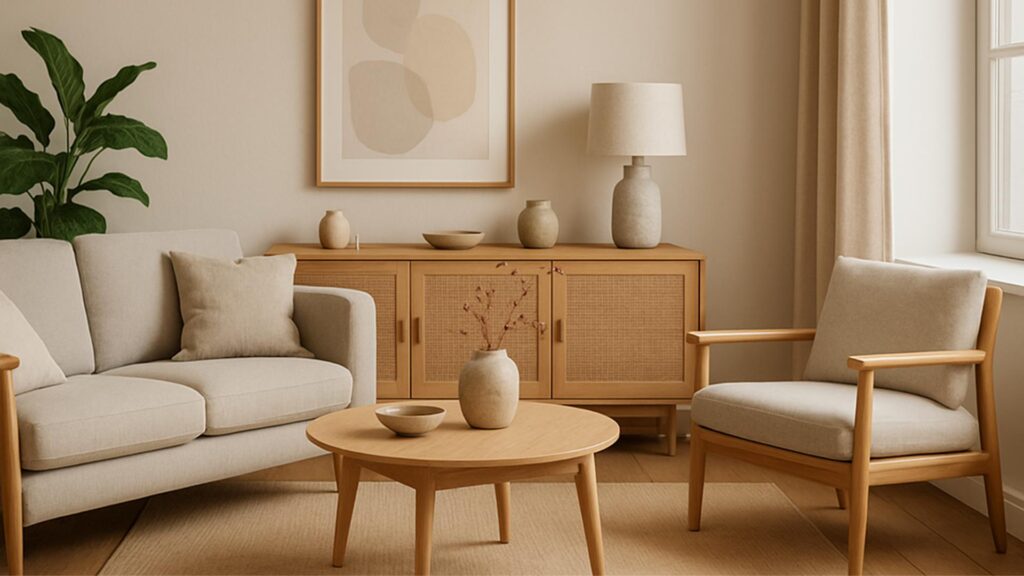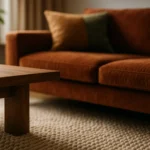In a world where design trends come and go like the seasons, Scandinavian design has maintained its place in the spotlight not just for years, but decades. Its enduring appeal transcends borders, finding a place in homes globally. We might ask, what sets this style apart from fleeting design fads? At the heart of Scandinavian design is a commitment to simplicity, function, and beauty. It’s a style where every piece of furniture, every interior choice, serves a purpose while adding to the overall aesthetic. Let’s explore the elements that make this design style not only timeless but also universally cherished.
The Essence of Scandinavian Design
Scandinavian design is more than just a style; it’s a philosophy. Rooted in the harsh climates and stark landscapes of the Nordic countries, it emphasizes efficiency without sacrificing beauty. The use of natural materials like wood and textiles creates a connection to the environment, fostering warmth and a sense of well-being.
The foundation of this style is built on clean lines and minimalist approaches, yet it never feels cold or uninviting. The strategic use of light, both natural and artificial, plays a vital role in amplifying spaces. A hallmark of Scandinavian interiors is their ability to transform even the most modest spaces into bright, airy environments.
Scandinavian designers are adept at blending traditional craftsmanship with modern techniques. This fusion results in timeless pieces that are both functional and aesthetically pleasing. The perennial appeal of this design is also due to its adaptability. Whether we are drawn to the Danish modernism or the rustic charm of Swedish country homes, Scandinavian design offers versatility that effortlessly fits into modern life.
The Role of Materials and Craftsmanship
In Scandinavian design, the choice of materials is never incidental. Emphasizing sustainability, designers lean towards natural materials that age gracefully, such as wood, leather, and wool. These materials not only add warmth but also evoke a sense of history and quality.
Craftsmanship is revered in Scandinavian culture, and this respect is evident in their design principles. Every piece is finely crafted with attention to detail, ensuring it stands the test of time both aesthetically and physically. By prioritizing quality over quantity, Scandinavian design has cultivated a legacy of enduring pieces that are passed down from one generation to the next.
The focus on craftsmanship ensures that Scandinavian furniture and decor remain relevant and sought-after. Designers often draw inspiration from nature, incorporating organic shapes and forms that bring a touch of the outdoors inside. This connection to nature is not just about aesthetic appeal; it promotes a sense of tranquility and harmony within the home. {image_content}
Designing for Space and Functionality
One of the most compelling aspects of Scandinavian design is its emphasis on functionality. Rather than creating visually cluttered spaces, Scandinavian designers prioritize efficiency and practicality. Each piece is thoughtfully designed to serve a purpose, minimizing excess and maximizing space.
Scandinavian interiors often feature multi-functional furniture, such as extendable dining tables and modular sofa systems, that adapt to the needs of modern living. This adaptability is crucial in today’s fast-paced world, where living spaces are often compact and require clever design solutions.
The strategic use of space is complemented by a neutral color palette, which enhances the feeling of openness. Minimalist decor and simple patterns prevent visual overload, allowing the clean lines and crafted pieces to shine. Through this marriage of form and function, Scandinavian design creates spaces that are not only beautiful but also highly livable.
The Influence of Iconic Scandinavian Designers
Scandinavian design owes much of its global recognition to a handful of trailblazing designers whose work continues to inspire. Figures such as Arne Jacobsen, Alvar Aalto, and Greta Grossman have left an indelible mark on the world of design. Their innovative designs and forward-thinking ideas have shaped what we recognize as Scandinavian design today.
These designers introduced concepts that were both groundbreaking and accessible. Jacobsen’s Egg Chair, with its organic shape, and Aalto’s iconic wooden stools are not just pieces of furniture; they are works of art that embody the principles of simplicity and elegance.
Their legacy is evident in the modern iterations of Scandinavian design, where the emphasis remains on creating pieces that are both practical and visually appealing. By blending traditional design with contemporary needs, today’s designers continue to push the boundaries while staying true to the core values of Scandinavian design.
In conclusion, the enduring appeal of Scandinavian design lies in its simplicity, functionality, and inherent beauty. It transcends fleeting trends and remains relevant by seamlessly integrating with the demands of modern life. This design philosophy, rooted in respect for materials, craftsmanship, and space, ensures that Scandinavian interiors feel fresh and inviting, year after year.
As we navigate a world that is constantly changing, the timeless nature of Scandinavian design offers a steady and reliable aesthetic that is both comforting and inspiring. Whether we’re looking to declutter a space, incorporate natural elements, or simply enjoy the elegance of a well-designed piece, Scandinavian style offers a harmonious blend of the traditional and the modern.
So, what makes Scandinavian design so timeless? It is its ability to evolve while staying true to its principles—offering us all a little piece of the serene Scandinavian landscape, no matter where we call home.
FAQ
What is Scandinavian design and how did it originate?
Scandinavian design is a minimalist style that emerged in the early 20th century, primarily from the Nordic countries of Denmark, Norway, and Sweden. It focuses on simplicity, functionality, and a connection to nature, influenced by the region’s climate and lifestyle.
Why is functionality a key aspect of Scandinavian design?
Functionality is central to Scandinavian design as it reflects the practical needs of everyday life in the Nordic countries. Items are designed to be both beautiful and useful, ensuring they serve a purpose while maintaining aesthetic appeal.
How does Scandinavian design incorporate elements of nature?
Scandinavian design often uses natural materials such as wood, wool, and leather, drawing inspiration from the surrounding landscapes. The use of organic shapes and neutral color palettes also reflects the region’s natural environment.
What role does minimalism play in Scandinavian design?
Minimalism is a guiding principle in Scandinavian design, emphasizing clean lines, uncluttered spaces, and a focus on quality over quantity. This approach creates a calming and efficient living environment, reducing distractions and promoting well-being.
How has Scandinavian design maintained its popularity over the years?
Scandinavian design’s enduring popularity can be attributed to its timeless aesthetic and adaptability. Its emphasis on simplicity, functionality, and sustainability resonates with modern values, making it relevant across generations and cultures.



